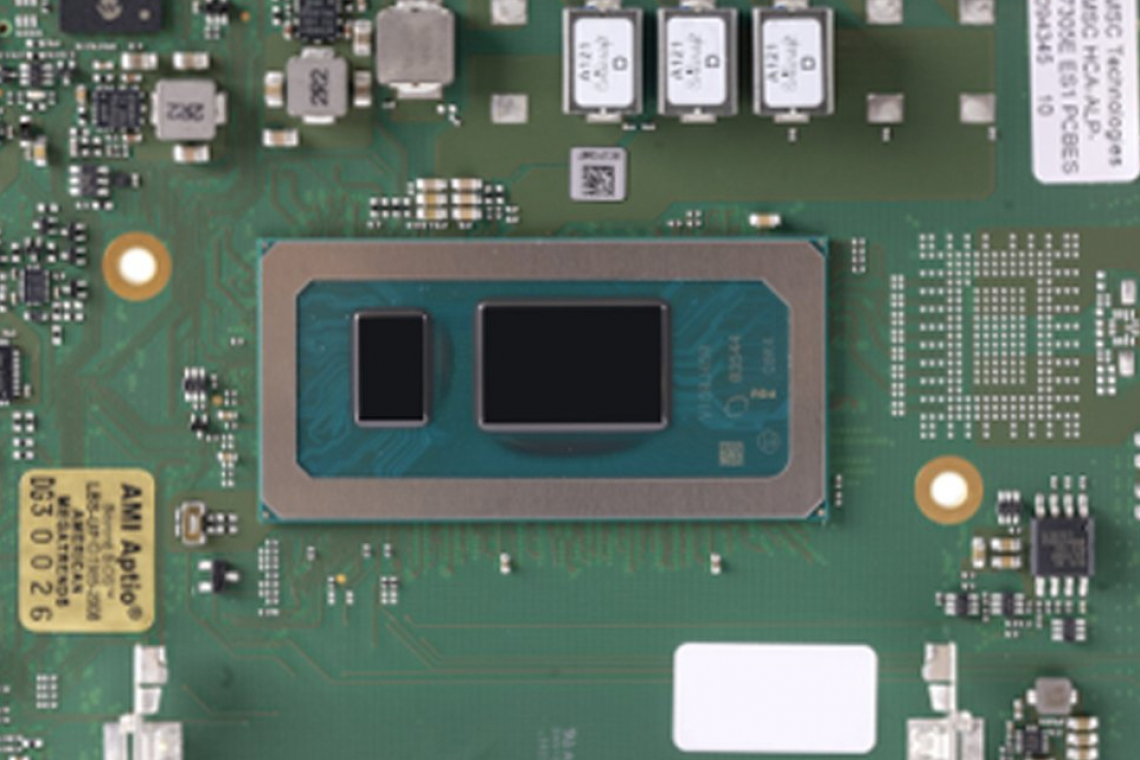Scalable embedded computer modules enable manufacturers of industrial electronics to focus entirely on their specific functions during development and to save significant time and costs in the development of end products by using COM modules for standard functions such as computing and graphics performance. Even the support of artificial intelligence (AI) can already be provided by COM modules. In this market segment, Avnet offers embedded server and client products in the COM-HPC form factor (Computer-on-Module for High Performance Computing). COM-HPC modules offer high computing, graphics and video performance as well as numerous high-speed interfaces that enable broadband connectivity to networks and local I/O controllers. The scalability is the basis for future-proofing by switching to future technologies. Typical applications for the powerful COM-HPC modules include industrial IoT systems with AI/machine learning functions, complex HMI and edge computing applications, intelligent video surveillance systems, modern medical devices and professional measurement systems.
The COM-HPC standard defines five different form factors. The compact client modules are available in three sizes: 160 mm x 120 mm, 120 mm x 120 mm and 95 mm x 120 mm, while the server modules are available in 200 mm x 160 mm and 160 mm x 160 mm formats. A new COM-HPC Mini standard with smaller dimensions is in preparation. Directly mounted heat sinks are available for modules with increased power dissipation. The various COM-HPC module types are optimized for different embedded computing applications.
Client modules have integrated video interfaces such as DDI and eDP/MIPI-DSI for controlling four independent, high-resolution displays. Up to 49 PCIe lanes enable the connection of external I/O devices and flash-based mass storage devices. One or two KR Ethernet (maximum 25 Gbit/s) and up to two Base-T Ethernet interfaces (maximum 10 Gbit/s) are available. Server modules offer numerous PCIe lanes for connecting hardware accelerators, mass storage devices or data concentrators, for example. Up to eight KR Ethernet interfaces are supported, whereby the bandwidth per port can scale from 1 Gbit/s (e.g. 1000Base-KX) to 25 Gbit/s (e.g. 25GBase-KR) depending on the implementation. A Base-T port with up to 10 Gbit/s bandwidth (10GBase-T) is defined for management tasks.
Typical applications are IIoT systems with AI/machine learning functions
The MSC HCA-RLP COM-HPC client module family is equipped with Intel Core processors of the 13th generation of the H, P and U series. The hybrid architecture has performance cores and efficiency cores. The Thread Director ensures workload optimization. The architecture scales up to fourteen cores with 45/35 W thermal power dissipation (TDP). Applications with lower power dissipation can be operated with selected processor variants at 12 W TDP. The Iris Xe architecture with up to 96 execution units (EUs) ensures high graphics performance. For high data throughput, the MSC HCA-RLP modules enable up to 64 GB SO-DIMM memory in DDR5-4800 memory technology.
The module's I/O selection includes up to eight PCIe Gen 3 lanes, up to eight PCIe Gen 4 lanes and an optional eight-lane PEG port that supports PCIe Gen 5. The two Ethernet interfaces each offer a bandwidth of up to 2.5 GbE, based on the Intel i226 network controller. Additional I/O channels can be provided via USB ports with USB 4, USB 3.2, USB 2.0 and two UARTs. The display interfaces include three DisplayPort/HDMI interfaces and one Embedded DisplayPort. The modules can control up to four independent displays. Two SATA 6 Gb/s channels are available for mass storage devices. Optionally, the COM modules can be equipped with up to 1 TB NVMe SSD.
The MSC HCA-ALP client module family is equipped with 12th generation Intel Core H, P and U processors. The 13th generation and the 12th generation of the Intel Core processor family are socket-compatible and can be exchanged in existing architectures.
The COM-HPC client module family MSC HCC-CFLS is available in a wide range of module variants. The modules in COM-HPC format C can be equipped with up to 64 GB DDR4-2666 SDRAM. Up to three independent displays with a maximum resolution of 4k are possible via three DDI interfaces and an eDP interface. The PCI Express Graphics (PEG) x16 port based on PCIe Gen3 enables the integration of external graphics and AI accelerators. Finally, 16 PCI Express x1 lanes, USB 3 Gen1 and 2, SATA, 1G and 2.5G Ethernet as well as GPIOs are available.The more powerful server module family MSC HSD-ILDL COM-HPC integrates Intel's Xeon D-1700 processor, which combines up to ten Xeon cores, memory controller, high-bandwidth network functions and multiple PCIe root complexes on a single socket. The on-chip network controller supports up to eight Ethernet ports with various configuration options from 100M to 25G per port and aggregated throughput of up to 100G. An additional 1 Gb/2.5 Gb Ethernet port supports TSN for real-time applications. PCI Express lanes with Gen 4 and Gen 3 support enable the connection of external hardware accelerators, FPGAs, NVMe storage and I/O devices.
Avnet Embedded supports high-performance computing module evaluation, rapid prototyping and rapid application development with a complete ecosystem that includes the MSC HC-MB-EV Client Carrier Board and comprehensive design support. Avnet Embedded manufactures its COM-HPC products in decentralized design centers and its own fully automated production facilities.


